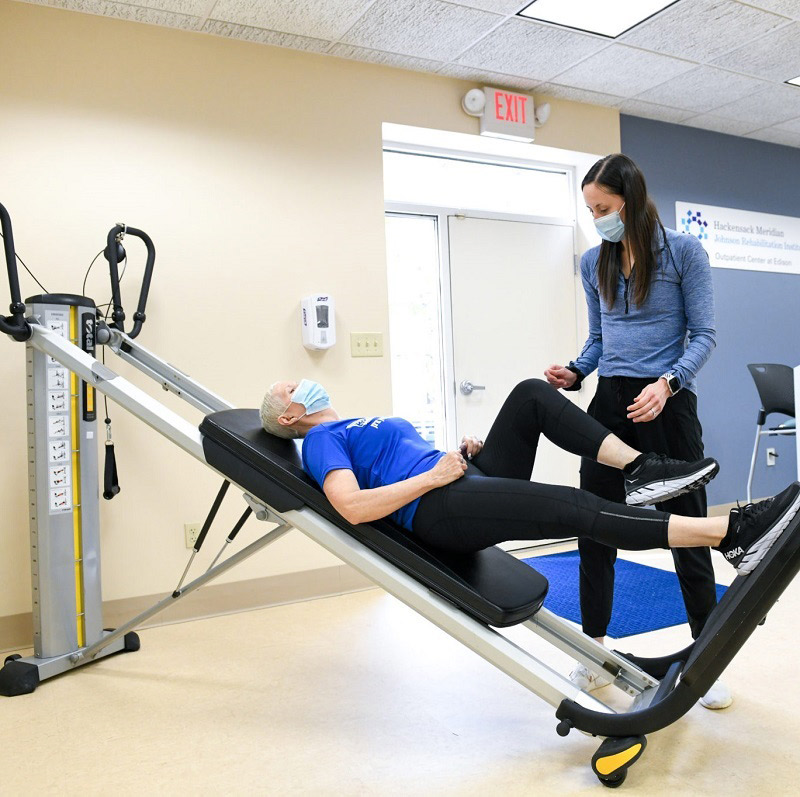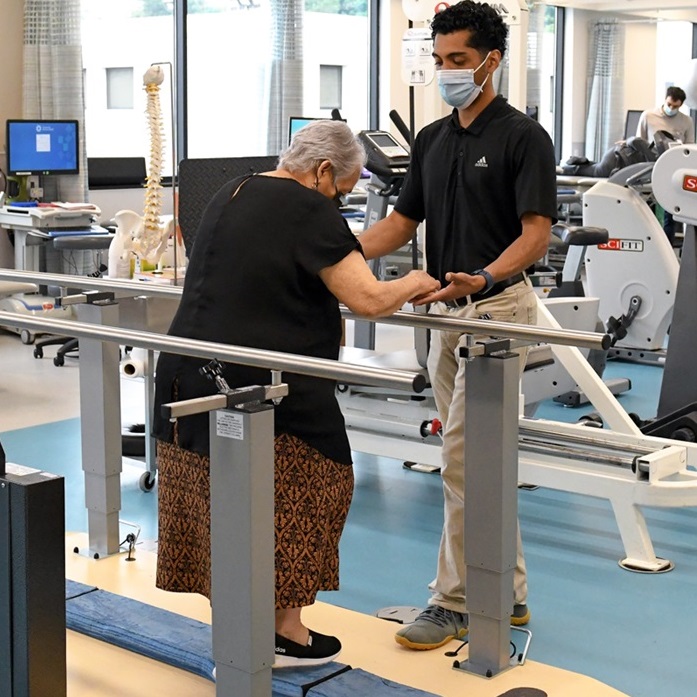Can Physical Therapy Help Your Arthritis?

November 16, 2021
While there’s no cure for arthritis, physical therapy may help you manage your symptoms related to mobility and activity depending on your diagnosis and individualized care plan.
Though there are more than 100 different types of arthritis with their own causes, symptoms and treatments, the most common types of arthritis include:
- Osteoarthritis
- Rheumatoid arthritis
- Psoriatic arthritis
If physical therapy is prescribed to you to better manage your arthritic condition, some benefits may include:
- Increased range of motion. Stiff joints are a common complaint with arthritis and can make it difficult to bend and straighten. “Gentle stretching and range of motion exercises can help to maintain the flexibility necessary for daily tasks, such as getting in and out of chairs or reaching overhead,” says Ofure Luke, M.D.
- Strengthened muscles. If the muscles around your joints are weak, they will be under extra stress and can hurt. “Strong muscles can help stabilize a weakened joint and decrease pain,” Dr. Luke adds.
- Safe and effective use of assistive devices. Assistive devices, such as canes, walkers, crutches, braces and splints, take stress off your joints and muscles and make it easier to perform certain activities.
- Pain management. Physical therapists can teach you the best ways to relieve acute and chronic pain, as well as how to adjust your activities to prevent pain.
What to Expect From Physical Therapy
Your physical therapist will work with you to develop a treatment plan based on your history and goals. This is likely to include:
- Program of customized exercises
- Pain relief, using heat or ice packs, electrical stimulation and ultrasound
- Hands-on joint and soft tissue massage and mobilization
- Assistive devices
“A critical element of physical therapy is education,” says Javier Soares-Velez, M.D. “Your physical therapist will help you understand, for example, how to reduce stress on your joints, how to do the exercises in your treatment plan and how to manage pain on your own.”
You may need to see your physical therapist weekly to start, or even multiple times a week during a period of acute pain. But as you learn to manage your arthritis, you’ll likely see your physical therapist less often, checking in with them every few months to set new goals and update your treatment plan as needed.
“Patients will achieve a better and more sustained outcome when they commit to performing their exercises daily and consistently as part of a home exercise program,” shares Roger Rossi, D.O. “Living with arthritis is not always easy, but certainly incorporating the learned benefits of physical and occupational therapy into one’s life is an important part of management.
“Physical and occupational therapy may not always be prescribed for treatment of arthritis in some instances, and depends on the nature and course of the disease. One should always seek guidance from their physicians as to the best timing and indications, as well as precautions when receiving a therapy program.”
Please note: Physical therapy isn’t always prescribed for treatment for arthritis and, in certain situations can worsen symptoms.
Next Steps & Resources
- Meet our source: Ofure Luke, M.D., Javier Soares-Velez, M.D. and Roger Rossi, D.O.
- To make an appointment with Ofure Luke, M.D., Javier Soares-Velez, M.D., or Roger Rossi, D.O. or a Physical Therapy physician near you, call 800-822-8905.
- Learn more about Physical Therapy at Hackensack Meridian Health.
The material provided through HealthU is intended to be used as general information only and should not replace the advice of your physician. Always consult your physician for individual care.
Find a doctor near me

Protect Yourself From Golfers’ Wrist
Prevent golfer's wrist pain. Learn how to manage and avoid this common golf injury with expert advice from orthopedic surgeons. Find relief today.

3 Ways to Fix Neck and Shoulder Pain
Dr. Delavaux explains three common work-related scenarios that can lead to neck and/or shoulder pain and provides helpful solutions. Learn more.




